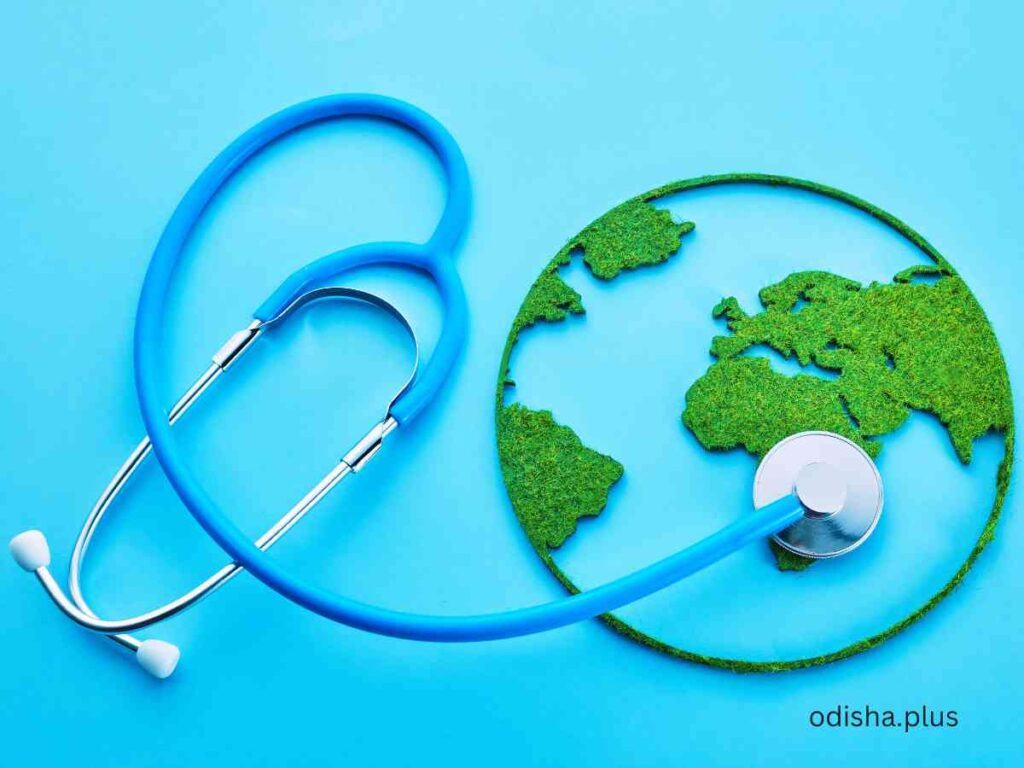Global healthcare faces rising costs, uneven access and disease spread, underscoring the need for sustained public financing for universal health coverage
Raghunath Mahapatra

It’s a fact that the spread of a disease doesn’t stop at a country’s borders in this modern world and with more people living in crowded cities and traveling to other countries, it’s easier for germs to spread. Infectious diseases that start in one part of the world can quickly reach another part of the world. In 2021, the top global causes of death (in order of total number of lives lost) are being associated with two broad topics: cardiovascular (ischemic heart disease, stroke) and respiratory (COVID-19, chronic obstructive pulmonary disease, lower respiratory infections), with COVID-19 emerging as the second leading causes of death globally.
Global Challenges
Besides the spread of diseases, there are other global health challenges, which can be categorized as resistance to medicines such as antibiotics which are on the rise worldwide. Natural and man-made disasters create refugee populations with immediate and long-term health problems. Climate change and not enough access to food and safe water are also global problems that can affect people’s health.
Along with these factors, a rapid rise in the population across the countries and an increase in life expectancies require expanding healthcare needs. The types of care they need also tend to be resource-intensive, leading to increased demand and costs. An increase in costs due to technological advancement, inflationary pressures and an increase in demand leads to an increase in the expenditure for health among the nations and for the whole world too.
In its 2023 global health expenditure report, the World Health Organization (WHO) has observed that public spending on health had increased across the world, except in low-income countries where government health spending has decreased and external health aid played an essential supporting role. The report reveals that global spending on health reached a new high of $9.8 trillion or 10.3% of global gross domestic product (GDP) in 2021.
Further, the report found out that about 11% of the world’s population lived in countries that spent less than $50 per person annually, while the average per capita spending on health was around $4,000 in high-income countries. Low-income countries accounted for only 0.24% of global health expenditure, despite having a huge 8% share of the world’s population.
It’s believed that the expenditure on health in India, including clean water and sanitation, is on track to reach the target of 2.5% of GDP by 2024-25, even if the center’s allocation failed to reach the target (0.8% of the GDP). States have surpassed the Centre’s allocation to achieve a combined effort of 2.13% of GDP. Despite concerns over the declining spending on healthcare systems by the central government, increased state allocations may help reach the 2.5% target by 2025.
In India, public healthcare expenditure includes the allocation of health and family welfare, Ayush research and water supply & sanitation. It’s been estimated that the centre’s expenditure was only 0.58% of GDP and 48% of this was spent on water and sanitation. Though, spending on clean water does keep one healthy, experts opine that it’s not a substitute for spending on public health systems. If the spending on water and sanitation is removed from health expenditure data, it can be seen that the expenditure on healthcare has been on a steady decline, in India, whether looked at as a percentage of the government’s total expenditure or percentage of GDP.
Out-of-pocket Expenditure
In India, public spending on health as a percentage of GDP was 1.9% in 2023-24, which shows an increase from 1.28% in 2018-19. The government’s goal is to increase public health spending to 2.5% of GDP by 2025, as outlined in the National Health Policy 2017. Despite this target, the public expenditure on health in India will be lower in comparison to other developed countries.
These lower public spending results in a higher out-of-pocket expenditure (OOPE) for the people in the country which is estimated to be 52% of the current health expenditure. This figure is much higher than the world average of 18% which indicates that people in India spent a higher amount on health issues from their family budget. Public healthcare, non-availability/poor availability of medicines and diagnosis tests at the public health facilities, and various user fees can be identified as the main reasons for this higher OOPE in India.
A higher level of OOPE reduces access to healthcare services, decreases the consumption of food & necessities, and exposes households to financial catastrophe and impoverishment. That’s why healthcare payments are being identified as a major cause of poverty in India, which pushes about 32–39 million individuals below the poverty line each year. Poor people not only lack the financial resources to access healthcare, but illness also reduces labour supply and limits their financial ability creating a vicious circle of poverty and poor health.
Thus, OOPE on health-related issues is particularly proving to be hard on the poor, whose illnesses either remain untreated or are partially treated. It forces the underprivileged population to get entangled in the quagmire of poverty, ill health and early death thus highlighting the ill effects of inequity of health care service, which distances a significant proportion of the population from Universal Health Coverage.
Bold Steps
Of course, to tackle this issue, the Government of India has taken some bold steps by which the proportion of households facing catastrophic health expenditure could be reduced from the current levels by 25% by 2025. To protect 50 crores of underprivileged people under health insurance, the Indian Government launched Pradhan Mantri Jan Arogya Yojana (PMJAY) in 2018, which has been redesigned as Ayushman Bharat Pradhan Mantri Jan Arogya Yojana (AB PM-JAY) to provide health coverage to all senior citizens aged 70 and above, regardless of their income. The scheme is currently operational in 33 States and Union Territories (UTs) except the NCT of Delhi, West Bengal and Odisha and as of September 9, 2024, over 35.4 crore Ayushman cards have been issued under the AB-PMJAY across the country.
“Sustained public financing on health is urgently needed to progress towards universal health coverage. It is especially critical at this time when the world is confronted by the climate crisis, conflicts and other complex emergencies. People’s health and well-being need to be protected by resilient health systems that can also withstand these shocks,” Dr Bruce Aylward, the Assistant Director-General of WHO opines. The risky macro-fiscal outlook requires effective policy options, tailored to specific country contexts, to protect essential health coverage and spending in the face of intensifying budget pressures.
(The writer is a former Senior Project Associate, HSS Department, IIT Kanpur. Views expressed are personal)






















